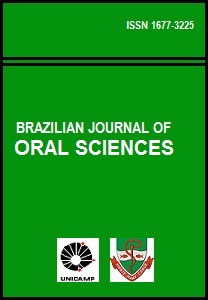Abstract
Aim: The aim of this systematic review was to compare the maxillary dental effects of cervical headgear and pendulum appliance during distalization of permanent maxillary first molars. Methods: A literature survey from databases covering the period from 1956 to August 2008 was carried out. Randomized controlled trials (RCT) and controlled clinical trials (CCT) were included. Two reviewers selected and extracted the data independently, and also assessed the quality of the retrieved studies. Results: The search strategy resulted in 48 articles, of which 3 met the inclusion criteria. Distal molar movement with headgear versus pendulum appliance was identified. In all studies selected, the methods used to detect and analyze the distal molar movement were valid and generally well know. All articles included an error analysis method and considered the risk for confounding factors, but only one study used blinding in measurements. Conclusions: The studies showed that both cervical headgear with patient compliance and a non-compliance pendulum appliance are very effective in distalizing maxillary molars. However, additional RCTs with larger samples of both molar distalizing appliances are needed to confirm this result and provide further reliable scientific evidence.
This work is licensed under a Creative Commons Attribution 4.0 International License.
Copyright (c) 2015 Ana de Lourdes Sá de Lira, Antonio Izquierdo, Sávio Prado, Matilde Nojima, Lucianne Maia
Downloads
Download data is not yet available.

